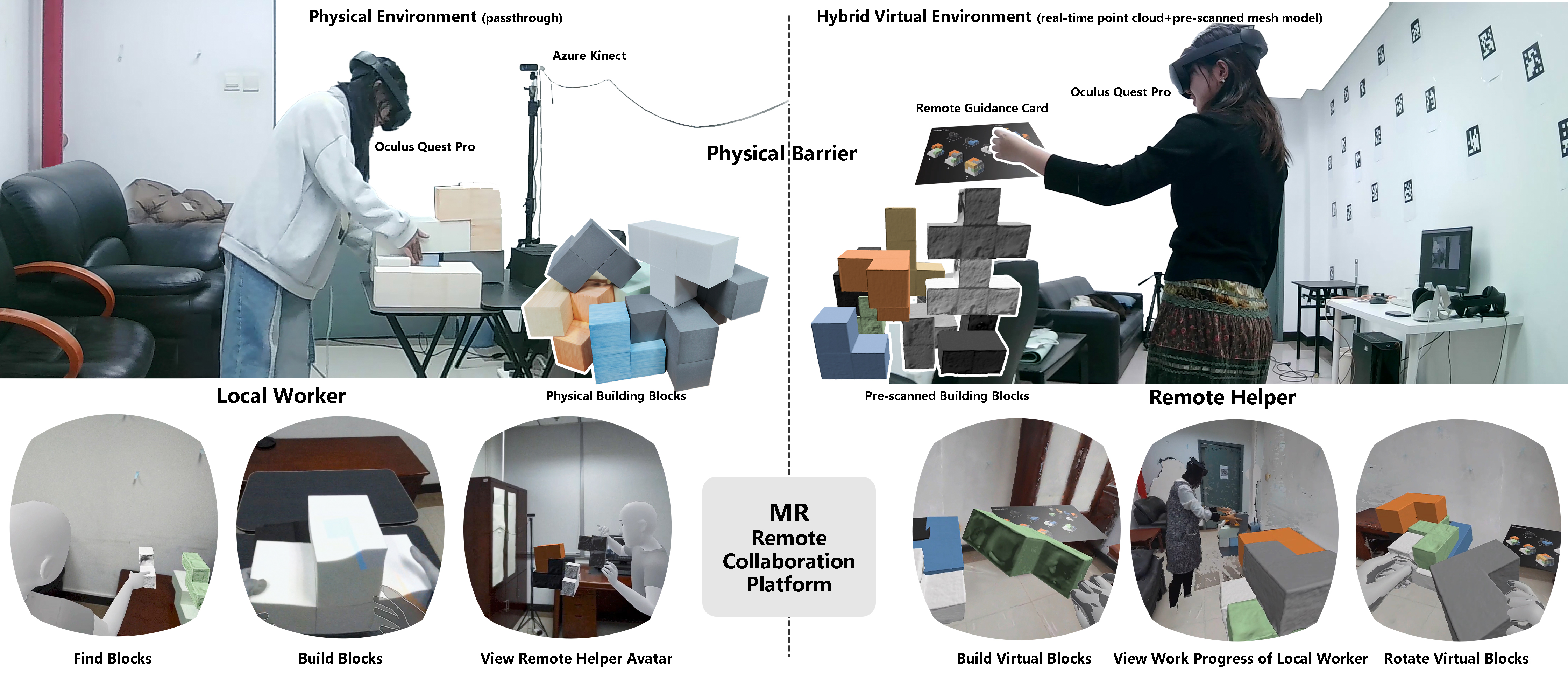A Comparison Study Understanding the Impact of Mixed Reality Collaboration on Sense of Co-Presence
Jianing Yin,
Weicheng Zheng,
Yuntao Wang,
Xin Tong,
Yukang Yan.
Published at
IEEE VR
2025

Abstract
Sense of co-presence refers to the perceived closeness and interaction between participants in a collaborative context, which critically impacts the collaboration experience and task performance. With the emergence of Mixed Reality (MR) technologies, we would like to investigate the effect of MR immersive collaboration environment on promoting co-presence in a remote setting by comparing it with non-MR methods, such as video conferencing. We conduct a comparison study, where we invited 14 dyads of participants to collaborate on block assembly tasks with video conferencing, MR system, and in a physically co-located scenario. Each participant of a dyad was assigned either a local worker to assemble the blocks or a remote helper to give the instructions. Results show that MR system cancreate comparable sense of co-presence with co-located situation, and allow users to interact more naturally with both the environment and each other. The adoption of mixed reality enhances collaboration and task performance by reducing reliance on verbal communication and favoring action-based interactions through gestures and direct manipulation of virtual objects.